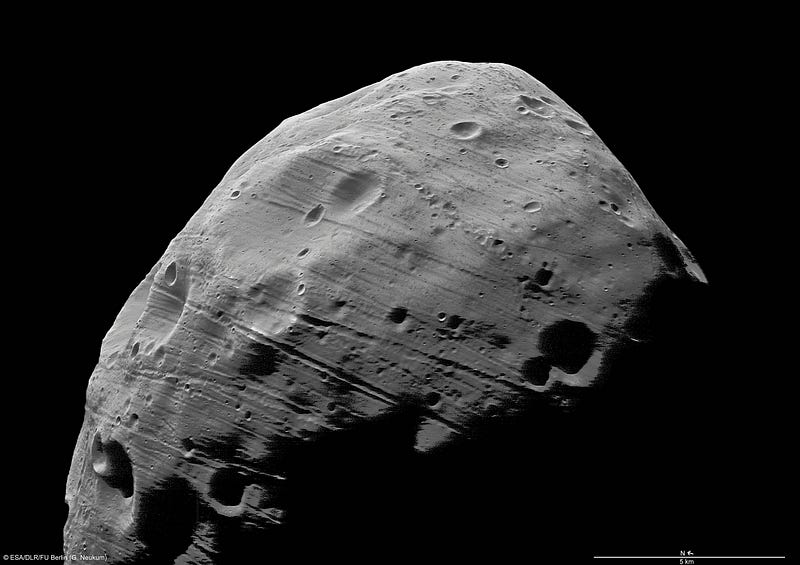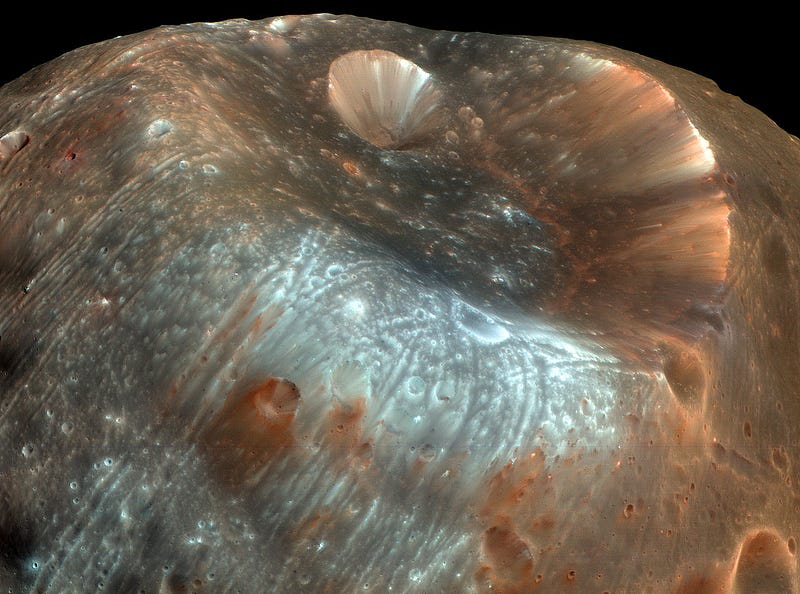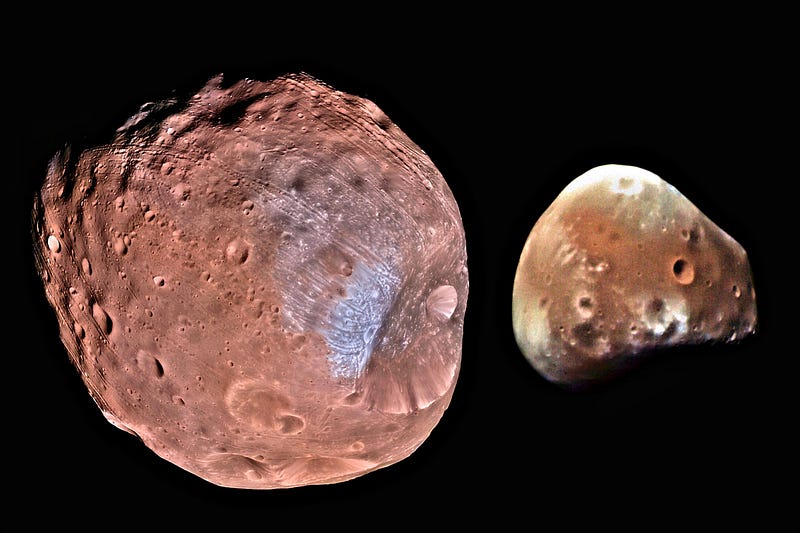Mysteries of Phobos: Unraveling the Enigma of Mars' Moon
Written on
Chapter 1: Introduction to Phobos
What causes the peculiar stripes on the surface of Phobos, Mars' moon? Recent research has confirmed a long-standing theory, suggesting these unique "tiger stripes" are early indicators of Phobos' gradual disintegration.

[Photo: European Space Agency, CC BY-SA 3.0 IGO, via Wikimedia Commons]
Mars hosts two moons: the smaller Deimos and the larger Phobos. The latter, reminiscent of a massive potato with a deep crater, measures only 27 kilometers in length. Phobos orbits Mars rapidly, completing a full revolution in just 7 hours and 39 minutes, rising and setting twice during a single Martian day. Situated a mere 6,000 kilometers from Mars, its gravitational pull draws it closer to the planet by nearly 2 centimeters each year.
Section 1.1: Discoveries from the 1970s
In the 1970s, the Viking probe captured images of Phobos, revealing unexpected long grooves aligned in parallel on its surface, measuring 100-200 meters in width and extending up to 20 kilometers. The initial theory proposed that these formations were remnants of the impact that created the Stickney crater—a massive impact believed to have nearly shattered Phobos. However, the absence of radial gouges from the crater contradicted this idea.

[Photo: NASA/JPL/University of Arizona, Public domain, via Wikimedia Commons]
Section 1.2: Insights from Recent Research
In 2015, NASA's Terry Hurford and his team proposed a different hypothesis: the trenches on Phobos signify the moon's impending demise. Current estimates suggest that Phobos may exist for only 50 to 100 million more years before tidal forces from Mars break it apart, potentially forming a ring around the planet.
But are these tidal forces already affecting Phobos? Recent studies led by astronomer Bin Cheng created a 3D model to simulate the gravitational effects on the moon, published in The Planetary Science Journal.

Phobos and Deimos — [Photo: Giuseppe Donatiello, CC0, via Wikimedia Commons]
What are Tidal Forces?
To understand tidal forces, consider Earth's oceans, which rise and fall due to the Moon's gravitational pull. Tidal forces can also affect solid celestial bodies, especially those with layered structures like Phobos. Researchers believe Phobos consists of space debris held together by gravity, encased in a thick layer of lunar-like regolith.
Cheng's team conducted numerous simulations, demonstrating that tidal forces could indeed create the grooves observed on Phobos. They concluded that as the surface cracks, loose materials shift into deep valleys, forming the distinctive ditches.
Interestingly, similar gravitational ruptures have been observed on Enceladus, Saturn's moon.
Chapter 2: Future Exploration of Phobos
The video titled "Martian Mysteries | The Phobos Incident, Monoliths, and Ancient Ruins" provides additional insight into these fascinating discoveries.
Despite the advancements in understanding Phobos' formations, some questions remain unanswered, particularly regarding the equatorial belts. Further exploration by the Japanese space agency JAXA's Martian Moon eXploration (MMX) probe, set to launch in 2024, aims to study both Martian moons and bring samples of Phobos back to Earth.
Source: The Planetary Science Journal, NASA
Cool that you made it to the end of this article. I will be very pleased if you appreciate the effort of creating it and leave some claps here, or maybe even start following me. It would be nice if you also left a tip! Thank you!